DJ Dallas (centre, in Chez Moi T-shirt) and friends. Photo courtesy of Dallas Noftall.
Article originally published January 14, 2013 by The Grid online (thegridto.com).
In the 1980s, Toronto’s lesbian scene was underground—quite literally, as it was often relegated to out-of-sight basement venues. Here, Denise Benson revisits the club that changed all that.
BY: DENISE BENSON
Club: Chez Moi, 30 Hayden
Years in operation: 1984-1989
History: Though it may be difficult for younger dykes socializing in today’s Toronto to imagine, it wasn’t so long ago that queer women in this city had few options for meeting, dancing, and creating community.
From the late 1970s into the ’80s, there were occasional “Women’s Dances” (rarely was there a trendy title to be found) at venues including The Masonic Temple, The Party Centre, and The 519 Community Centre, as well as union halls, church basements and, well, basements in general. Lesbian bars were often dark, small, and far from central, although some—like The Blue Jay, Kit Kat Club, Deco’s, Fly By Night, Cameo, and The Warehouse—are still talked about lovingly in some lesbian circles. There were also mixed queer venues, like The Carriage House on Jarvis, The Quest on Yonge, and Katrina’s on St. Joseph, where gay women were very welcome.
By the time Chez Moi opened in 1984, there was a dearth of social spots for lesbians, despite the explosion of gay men’s bars on Yonge, Church, and surrounding streets. In fact, The Chez itself wasn’t even a dedicated spot for women when it first opened.
Located a block south of Bloor and about halfway between Yonge and Church, Chez Moi was owned by the Korenowsky family. It opened as Korenowsky’s in 1942, and, for decades, operated as a tavern serving food and drinks alongside live music. Over the years, Korenowsky’s was frequented by jazz fans, postal workers, students and business crowds alike.
“My recollection is that Chez Moi was not a gay bar until the owner, Mr. Korenowsky, passed away,” recalls Rose Amato, a Chez customer who would later become close with the Korenowskys, and managed the bar for eight months. “When Mr. K was alive, they ran it as a straight jazz bar and tavern. It became gay once their son Russell started to manage it.”
Russell Korenowsky Sr. passed away in September of 1983. The venue would open as Chez Moi late in 1984.
While it’s said the ghost of Russell Korenowsky Sr. remained in the building—Amato tells me she and others would still smell his cigars in the office—it’s also understood that Mr. K would not have approved of his family running a gay establishment. Most of the people I spoke with mention that Russell Jr.—a.k.a. Rusty, a gay man himself—convinced his mother Lynn to give the gay crowd a go.
Bonnie Meyer—a rock and R&B musician who performed with a variety of projects during The Chez’ history, including in its pre-gay days of 1984—credits Sharon Flannigan for stoking the concept of a new women’s hangout. Flannigan, who passed away from cancer early last year, was well-known in the community for having organized lesbian events, including at her east-end Saturday dancehall, dubbed Flannigan’s.
“Sharon went to Mrs. Korenowsky when it was still a straight bar, back when they did businessmen’s luncheons and then served drinks and burgers and all that through the rest of the day,” recalls Meyer. “It wasn’t that busy, so they were likely losing money.
“Sharon said, ‘If you give this bar to me over the next three weekends, I’ll pack the place.’ They said, ‘Go ahead,’ and she did exactly that. She got out her phone book and called everybody.”
“Russell did try to appeal to the gay male dance crowd, but it didn’t take,” adds longtime Chez DJ Elaine Doy. “They then hired a friend of mine, Linda Sharpe, to court the lesbian crowd, and it took off!”
Open daily, Chez Moi was always somewhat fluid. It was a sizable space, with a great outdoor patio and a daytime menu that attracted mixed lunchtime and post-work crowds. Patrons appeared more obviously gay as night fell.
“It was kind of weird,” relates DJ Julie Ley (pronounced “Lee”), who came to play Wednesdays through Sundays at The Chez in 1985, after years of entertaining at The CN Tower’s Sparkles disco, followed by a brief stint at cozy lesbian bar Togethers. “All kinds of people would go for a beer after work. By a certain point, the straight people would leave, the gay people would come in, and we’d rock the room.”
Why it was important: “Back in those days, lesbian clubs were low-budget, discreet, out-of-the-way holes in the ground,” says Doy, a mobile DJ who played weddings and special events until landing a gig at Chez Moi during its transition. “They always gave you the feeling that you were sneaking around doing something wrong! That’s one of the reasons why The Chez was so exciting: Even though it was tucked away on a side street, it was at Yonge and Bloor—a respectable neighbourhood. It was a legitimate bar, and on the ground floor yet.
“While other bars were offering us Thursdays or Sundays just to make a buck on a slow night, we could go to The Chez anytime. It brought us out as a community—we had arrived!”
Though far from fancy, hi-tech, or huge by today’s club standards, The Chez held hundreds of people between its main floor and lower level, which was initially open only for pool, but later renovated to accommodate the club’s growing line-ups. It was a nightclub with a tavern feel, its rectangular main room filled with lots of dark, heavy wood, including the long, prominent bar and the chairs and tables in The Chez’ raised seating area. The elevated DJ booth was off to the room’s left corner, with a wooden dancefloor in front. Massive mirrors were everywhere, as were ledges for beverages.
“The Chez had a pub feel to it, but included an awesome-sized dancefloor, excellent sound and lights, and a good booth,” says Doy, who DJed at the club until August 1985, and returned in the spring of 1989 until The Chez’ close. “You could see the entire club from that booth.”
“I thought it was an incredible space,” agrees Ley. “I think Chez Moi was our first real, big gay women’s nightclub. It was only after The Chez that people started opening bigger clubs, and trying to do better. That’s where places like The Rose [547 Parliament, later operated as Pope Joan] came in. The Chez really made a name for women’s bars because they were the grand beginning.”
In addition to the tiny Togethers (upstairs on Church) and The Chez, lesbians going out in mid-’80s-Toronto also had the intimate Felines on Richmond, which catered to a professional crowd, and Cameo, on Eastern. True to form, Cameo was in a basement, in an industrial area, and, according to Doy, featured décor that included Christmas lights and a ceiling covered in tinfoil. Cameo lost a lot of its crowd to Chez Moi.
Still, the Cameo was often a hot spot, particularly when mobile disc-jockey Rosie Demitro became resident on weekends. Soon, she was approached by a Chez manager named Clayton (surname unknown), and began spinning there on Sundays—all in addition to her day job as a courier with Purolator.
The entertaining, personable Demitro was an immediate hit with Chez Moi crowds, and was convinced to bring her mixing and microphone skills to Hayden Street Fridays through Sundays. At the time, two DJs worked The Chez booth; Julie Ley was soon hired, and paired with friend Demitro.
“After a couple of months of that, I told Clayton I wanted to bartend to make more money,” Demitro offers during a phone chat. “He decided to try putting a woman behind the bar, and, oh my gosh, did I ever make good money!
“I was out at 18, and was 31 when I worked there, so I knew about lesbianism. I had wisdom, let’s put it that way,” she laughs. “I listened a lot.”
Consistently, Chez Moi DJs were entertainers, crowd pleasers, and part of the Chez community.
“I was always a show DJ,” says Ley. ”I loved to play my tambourine, sing along, and get the whistle out.”
Ley was also infamous for her on-the-fly collabs with saxophonist Carrie Chesnutt. The well-known Toronto musician gigged with a variety of jazz and R&B bands all over the city. She performed early on at Chez Moi with her group Chesnutt and Graham, and often joined The Silverleaf Jazz Band during their Sunday-afternoon shows. Following these gigs, Chesnutt jammed upstairs with Ley.
“Carrie and I would have such a laugh,” Ley recalls. “I’d spin specific tracks, and then she’d walk into the room playing her sax, I would play my tambourine and rap, and the crowd would go wild for it.
“We were a little off the wall, and people loved it. We’d do something we called ‘The Peanut Butter Song.’ I started doing this rap about peanut butter that had to do with smooth or extra smooth. The next thing I knew, I started to get different jars of peanut butter placed all along my DJ booth. It was a naughty song, let’s put it that way.”
Equally vivacious was DJ Dallas Noftall. She arrived in Toronto from Newfoundland in July of 1986, and could soon be found on The Chez dancefloor “every night.” Noftall knew most Chez customers by name before she was asked to give DJing a go in the spring of 1987. She had become good friends with manager Russell Korenowsky Jr. through her then-girlfriend, Linda Hajekerou, also a music enthusiast.
“Rusty asked me to DJ downstairs, in the Stardust Lounge—it was called ‘the dungeon’ by staff and regulars—which was where people went as a holding area for the inside line-up,” Noftall begins.
“I had never DJed before, and was terrified. I started on a Friday night, while a gal named Gilda DJed upstairs, and it went well. Then, on the Saturday, she fell out of the booth and broke her arm, so management insisted that I head up to the main bar and get the tables spinning. The rest is history.”
Initially, Noftall was a resident alongside Chez mainstay Ley. Later, she’d spin five or more nights weekly, with overlapping residents including Doy, Mark Bandura, and “mentor and friend” Allan White.
“We were all pretty close, and all came to party there on our nights off,” shares Noftall. “We had our own styles and niches, so people knew which night to come to get their particular type of fix. I played disco, funk, house, and some slow stuff.”
Noftall’s list of her favourite Chez Moi classics includes Prince’s “Erotic City,” Whitney Houston’s “So Emotional,” Thelma Houston’s “Don’t Leave Me This Way,” Company B’s “Fascinated,” and Nice & Wild’s “Diamond Girl,” along with the likes of Divine, New Order, and Erasure.
Doy mentions songs including Madonna’s “Into the Groove,” Phyllis Nelson’s “Move Closer,” and “my signature last song, ‘Over the Rainbow‘ by Sam Harris.”
Ley, who cites Kool & The Gang’s “Celebration” and Sugarhill Gang’s “Rapper’s Delight” as two faves of the time, appreciates the free rein DJs were given at Chez Moi.
“I was never programmed or told what to play. I could enjoy myself and make people happy. It was a place where politics stopped at the door, and people could come in to relax and party. The Chez was a really accepting place. We had a lot of freedom there.”
Chez Moi was hugely popular in its day. On weekends, there would often be line-ups all the way to Church Street. It was the first lesbian bar I ever went to, in late 1986, and I still remember exactly how it felt to line up alone outside, have my name put on a list to be called out when there was enough space to be invited upstairs, and then to walk into a room filled with women and heat. Some women danced shirtless while others cruised so openly my budding-newbie-dyke mind was blown.
“The women were absolutely on the prowl,” chuckles Demitro. “They were looking for girls, let me tell you. If you were sexy, you’d be picked up, like, bam!”
Weeknights were a lot more laid back while Sundays were the favourite among regulars, especially in summer when baseball season was in full swing. People packed the patio, came out in droves for the afternoons of live music, and supported fundraisers for causes ranging from The Chez Moi baseball team to cancer survivors and AIDS awareness. The Chez was a community hub where anything could happen.
“I remember a crazy talent night we did over a period of two months,” says DJ Mark Bandura. “Anyone could come in and perform anything. It was hilarious, and it packed the joint. I vividly recall a woman with a beaver puppet singing—very strange.”
Sarnia native Bandura DJed at The Chez from roughly 1985 to 1987, while a student. He’d spin on both floors, bouncing between pop hits, dance remixes, and select alternative cuts. To this day, I’m grateful to him for playing my requests for Siouxsie and the Banshees, The Cure, Depeche Mode, and lots of music I couldn’t hear in other lesbian bars. (I began to produce my own queer club nights in 1987.)
Bandura’s presence also helped make clear that The Chez was an inclusive club.
“I started there because one of my best friends from Sarnia was a lesbian, and we wanted a place to hang out together,” he writes. “The crowd was mostly lesbian but, as it got busier, it became a place where lesbians and their gay male friends were comfortable together. There haven’t been many clubs like that.”
The welcoming vibe was fairly widespread. Rose Amato—who coached The Chez Moi ball team for years, and was convinced by Mrs. K to act as club manager—illustrates the point.
“I think once the old-timers—who were coming during the week, and to watch jazz on Sundays—realized that the gay people didn’t care if they were there or not, it became more and more comfortable. It was like, ‘You accept us, we accept you. You don’t judge us, then you won’t receive judgment.’”
Chesnutt, who lived two blocks away and could frequently be found at The Chez, also recalls that the clientele was “a little of everything. I remember a businessman-looking guy I talked to one day. He had a rhinestone necklace that I complimented him on. He then took it off, gave it to me, and proudly confessed he was wearing pink leotards under his suit. Then he showed me. Cute!”
“I’m in my 50s now,” adds Amato. “And I’d have to say that The Chez was definitely one of the best bars ever for women. It opened its doors to everyone and, unless you were a problem, like a drunk who created havoc or someone who hit on women when they didn’t want to be hit on, you were never asked to leave.”
That said, in the mid-to-late 1980s, homophobia was still rampant. “Sexual orientation” may have been added to the Ontario Human Rights Code as a prohibited ground for discrimination in 1986, but our issues were rarely discussed in mainstream media, and a large percentage of people still felt they had to live closeted lives. Welcoming or not, The Chez was beside an alleyway, and had a few parking lots nearby. It wasn’t uncommon for fights to be sparked outside by passersby uttering homophobic slurs.
“I remember a few things that made me say to Mrs. K that one of these nights I might not walk out of there alive,” admits Amato. “There was a night I cut off a straight gentleman who was drunk. He proceeded to go out and get in his Camaro, and he drove through our front doors, almost taking out our door person. That was scary.
“One Sunday, we had someone come in who said he had a gun and that he wanted ‘all the queers gone’ because it was a jazz bar and queers didn’t belong there. We got him out fast. One other night, a woman smashed a bottle on the dancefloor and went after someone. But in all the time I went or worked there, I only remember those incidents.”
Police harassment remained an issue as well. Following the bathhouse raids of 1981, Toronto’s gay and lesbian community remained rightfully wary of police presence in our bars.
Elaine Doy recalls a Saturday night experience at The Chez in 1985.
“The dancefloor was packed, and I was in the booth. A cop had lost his badge in a scuffle outside. He came in asking for it, and was directed to the DJ booth. I told him nothing had been turned in, but he decided to come into the booth and do an illegal search. So I resisted, with my knee in his groin, and was arrested right there, in the booth. The music stopped, I was led out, handcuffed, through the still-crowded dancefloor, amid jeers and boos.
“When my day in court came, I was flabbergasted at how many Chez patrons showed up to offer their support. It was a packed house. That’s what I loved about The Chez: Everybody stuck together. As it turned out, the case was thrown out of court and the officer in question was demoted.”
Many I speak with describe the Chez regulars as family. The largely working-class crowd was close-knit, but not close-minded.
“The Chez was unique in that the crowd was eclectic—and no cliques!” Doy exclaims. “Everybody got along. Sure, there were the odd drunken arguments but, for the most part, everybody was there to party.”
“The Chez was like Cheers, but gay and dancey and huge,” describes Dallas Noftall. “There were people from all walks of life, all income levels, and all facets of the LGBT community. The Chez was easy, fun and unpretentious. It demonstrated that we can all not only co-exist, but we can thrive when we enter into a place where the focus is not on shoes or hair or the car you drive, but instead the heart and soul of communities worldwide: music and camaraderie.”
Who else played/worked there: Live music has long played a key role in lesbian circles. The Chez’s Sunday afternoons were especially hopping during the years when the duo dubbed Thunder & Lightning (a.k.a. Bonnie Meyer and Carrie Chesnutt) performed.
“Bonnie had a standing Sunday afternoon gig, and was like a god to those gals in there,” says Chesnutt, who played sax to Meyer’s guitar and vocals, and continues to perform at an impressive range of venues.
“Those women were dedicated, amazing fans. I remember that they always brought presents, especially for Bonnie—she was like the reincarnation of Elvis. We got up to a lot of shenanigans back then.”
“Sunday afternoons there were the greatest,” exclaims Meyer, enthused enough at the memories to call me while on vacation in Hawaii.
A musician who’d played professionally for 14 years before she met Chesnutt in 1986, Meyer regales with tales of sex, drugs and rock ’n’ roll—or at least of limo rides, champagne and cocaine. (Hey, it was the ’80s.)
Now a retired counselor, healer, and hypnotherapist, the Vancouver-based Meyer continues to make and produce music, and remains appreciative of Chesnutt’s considerable chops.
“Carrie was so talented and provocative, and such an entertainer. The crowds would watch our every move. There was a lot of love, and a lot of energy.”
At The Chez, music lovers could also play spot-the-queer-celebrity. People like Carole Pope, Lorraine Segato, and even k.d. lang were known to hang out on occasion.
Demitro thinks back to a busy night in 1985 to spill the beans on lang, who’d already received national attention with 1984 album A Truly Western Experience.
“It was a big step up to the DJ booth—if you wore tight pants, you were gonna rip them, trust me,” begins Demitro as she describes putting on an extended 12-inch for a bathroom break.
“But when I came back, there was this woman in the booth, on the microphone. I got in there, took the mic from her and said, ‘Who do you think you are?’ She said, ‘Don’t you know? I’m k.d. lang.’ I said, ‘I don’t care. Get out!’ No one was allowed in that DJ booth or we would get in trouble from Mrs. K, so I didn’t care who she was.”
It was the Chez Moi managers who had to enforce Mrs. Korenowsky’s rules. Son Russell filled that role until he was too sick to do so. (He passed away from HIV/AIDS-related illness in January, 1993.) Linda Hajekerou, a.k.a. Linda Who, acted as manager for a brief bit after him. (She passed away from cancer two years ago.) Other managers included Stephen Sweeten, thought to have moved to Vancouver; Rose Amato, interviewed here; and Sergio Apolloni, a popular community ambassador and activist.
“Sergio brought The Chez to life with drag performers, AIDS awareness events, and shows and games,” says Noftall. “He knew his stuff for PR, and never hid from a camera or the role of organizer. He was there until we closed our doors.” (Apolloni passed away from AIDS in 1991.)
There were, of course, also many Chez bartenders, bussers, service and security staff who captured customers’ hearts.
Demitro speaks of working with a favourite gay bartender, named Joe, for years while an older gent named Johnny often worked afternoons.
“We all loved Johnny, even though he was a bit cantankerous sometimes,” says Amato. “Johnny came with The Chez, from when it was straight. Johnny was the boss, and he told you so.”
A few folks also mention bartender Karen Ramsay, who went on to work at The Rose Café, as did DJs Ley, Bandura and, later, Noftall.
The Rose, which would go on to reign as Toronto’s longest-lasting lesbian bar for a decade-plus, pulled from The Chez, but generally drew a different crowd, and wasn’t as welcoming to gay men.
“Chez Moi was seen as a friendly place where people had fun,” summarizes Demitro. “I didn’t really like going to The Rose Café. There, if you didn’t have a nice car or a house, you were going to be over in a corner. The atmosphere was more materialistic. At The Chez, whether you worked as a cashier or a dentist; it wasn’t all about separate cliques. It was way more down-to-earth.”
“I just loved The Chez,” adds Amato, who’s been employed at Worker’s Health & Safety since 1990. “I think what I miss the most is that it was an easy bar to be in. The friendships and the camaraderie—you knew you could go there on a bad day, and there would always be a friend.”
What happened to it: Chez Moi closed suddenly in early fall of 1989.
“There had been rumours that it was going to close for six months,” recalls Demitro. “Then, one night, Dallas called me in hysterics, saying, ‘The Chez doors are locked.’” (Demitro and Noftall were girlfriends for five years.)
Though she didn’t see it coming, Elaine Doy, who stopped DJing in 1992 and now enjoys life as a painter and drummer, was the DJ on Chez Moi’s final night.
“When I went up to the office to get paid [that evening], it was strongly suggested that I get my records out,” says Doy. “I was so used to clubs opening and closing without notice that I assumed they were going to close. I got my records, and took a memento—one of those round, silver discs for seven-inch singles. I have it to this day!”
Noftall, who went on to DJ at a slew of lesbian and gay clubs, is now a real-estate agent. She confirms that 30 Hayden was sold to developers, and that the property officially changed hands December 14, 1989. Part of it was incorporated into the Bloor-Yonge subway station. Today, the address is home to high-rise condo building Tiffany Terrace.
Noftall helps keep the vibe alive as she produces and DJs at more than 20 events annually, including Chez Moi reunions.
Thank you to participants Bonnie Meyer, Carrie Chesnutt, Elaine Doy, Julie Ley, Mark Bandura, Rose Amato, Rosie Demitro, and to Dallas Noftall who also helped a great deal by connecting me with others.

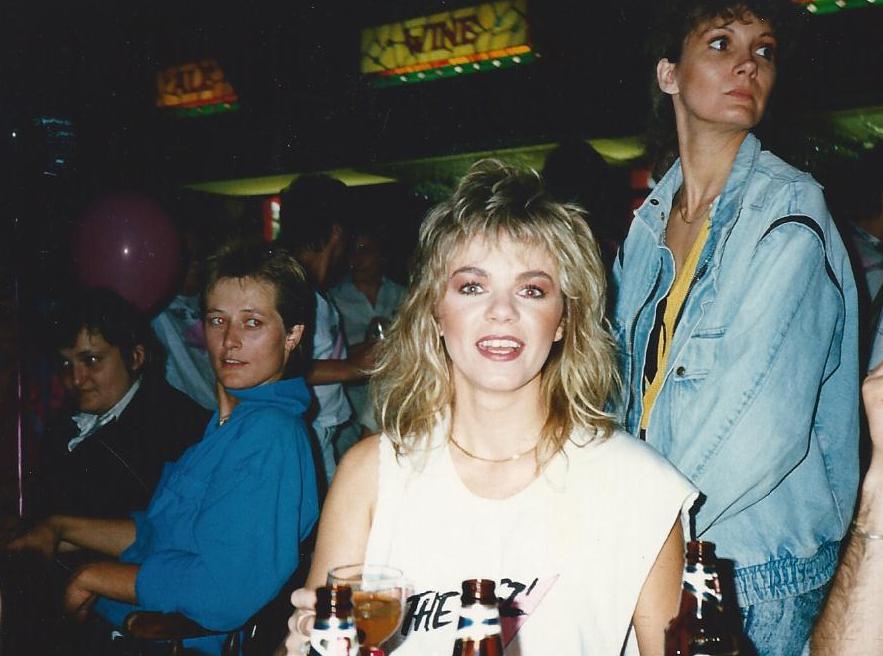
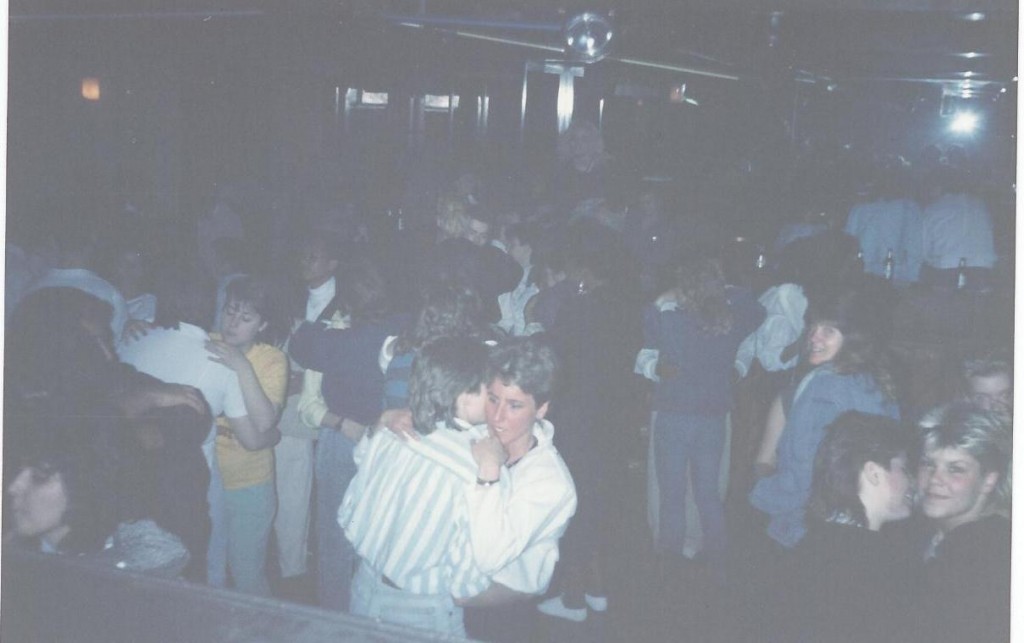
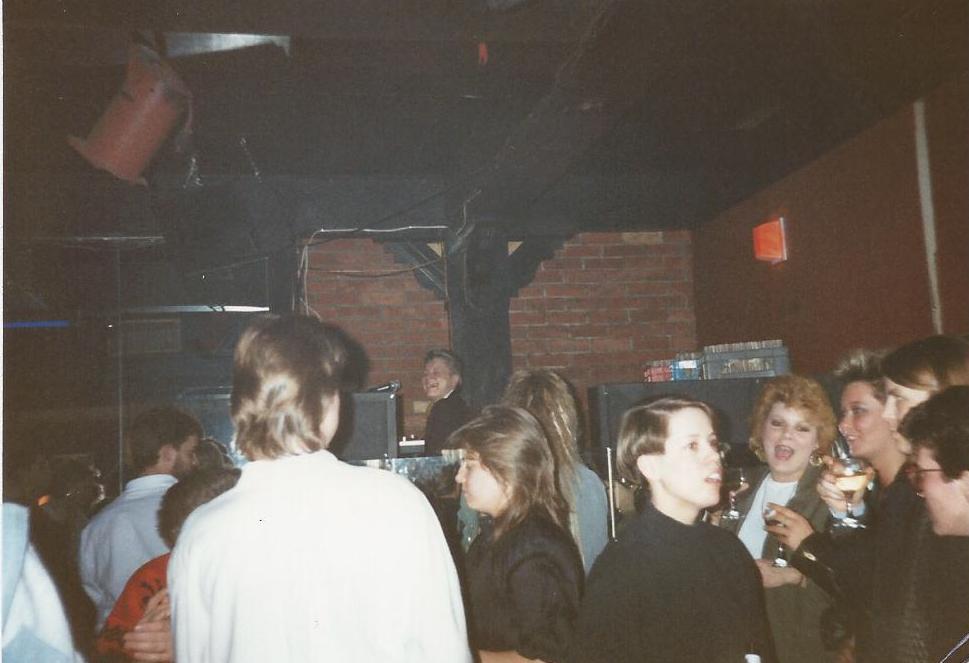
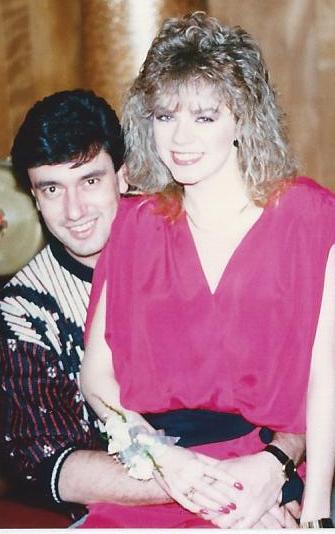
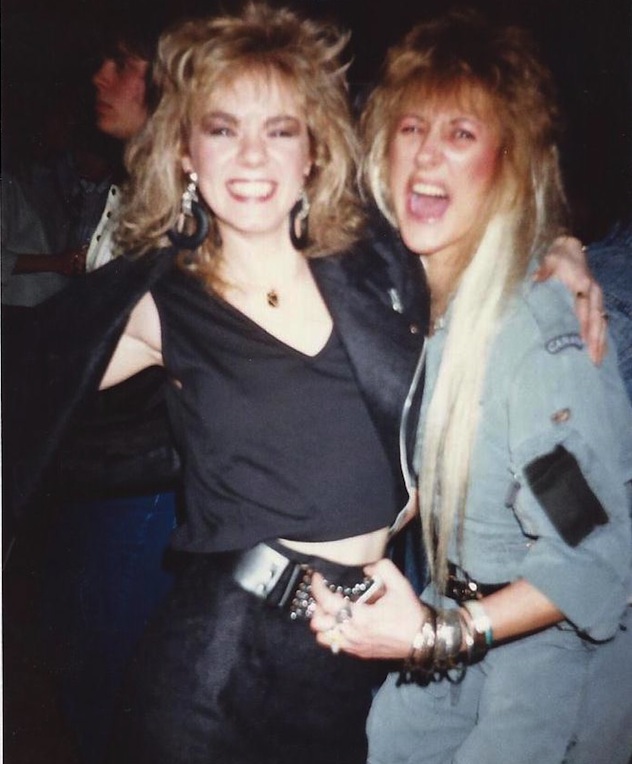
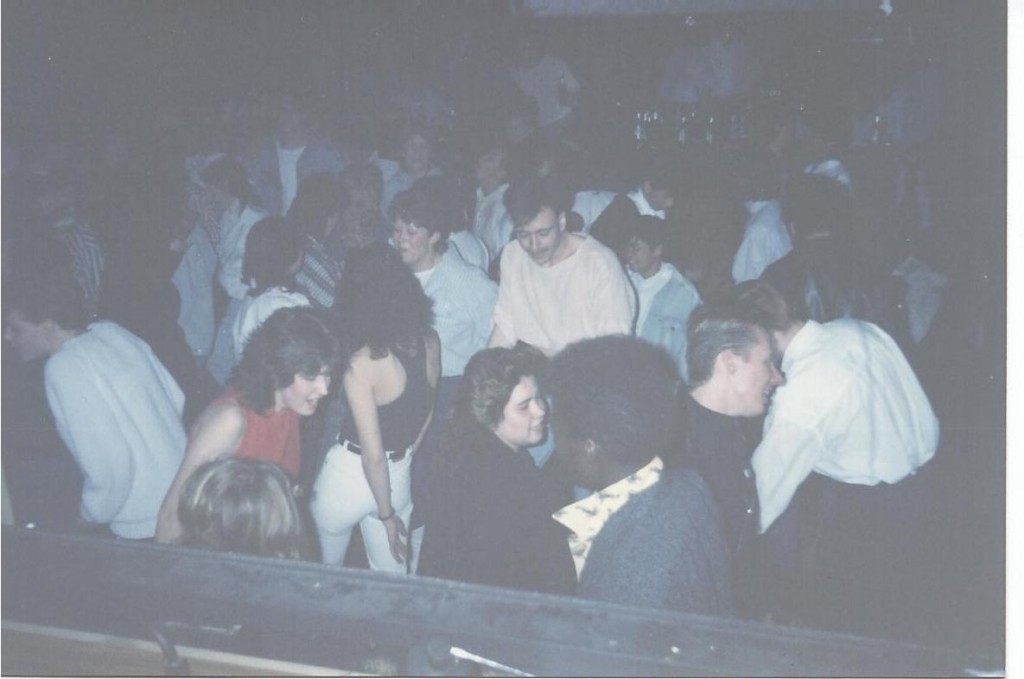
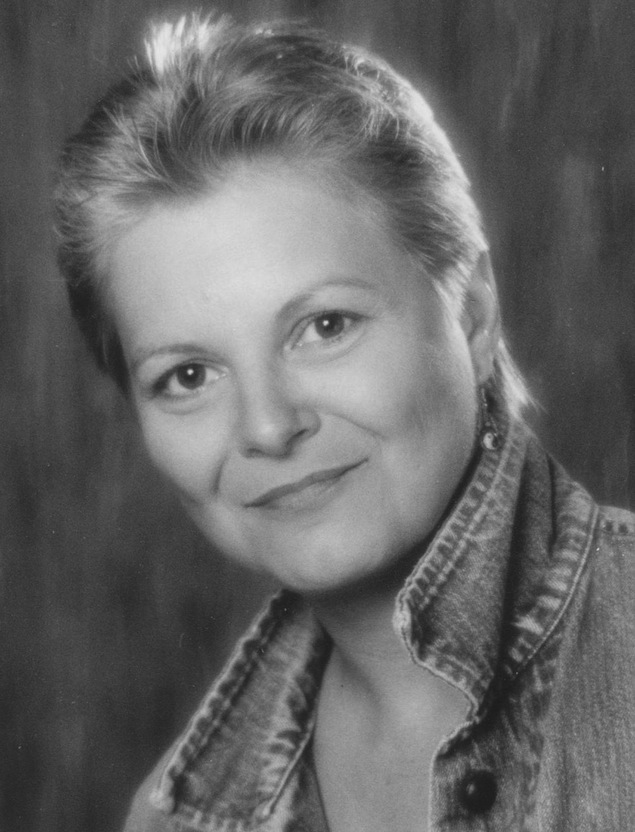
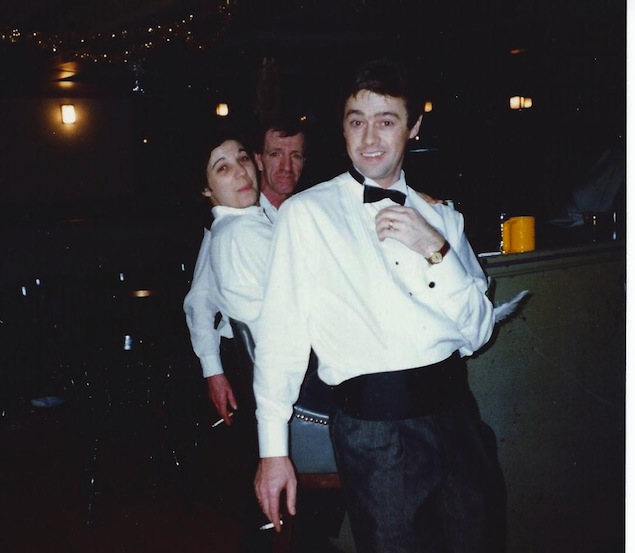
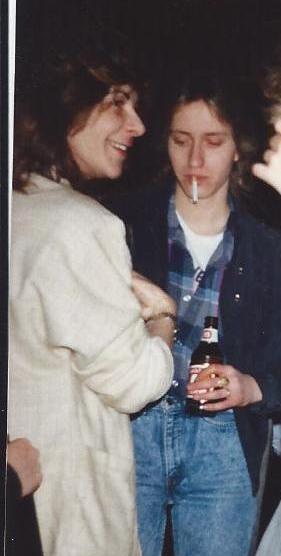
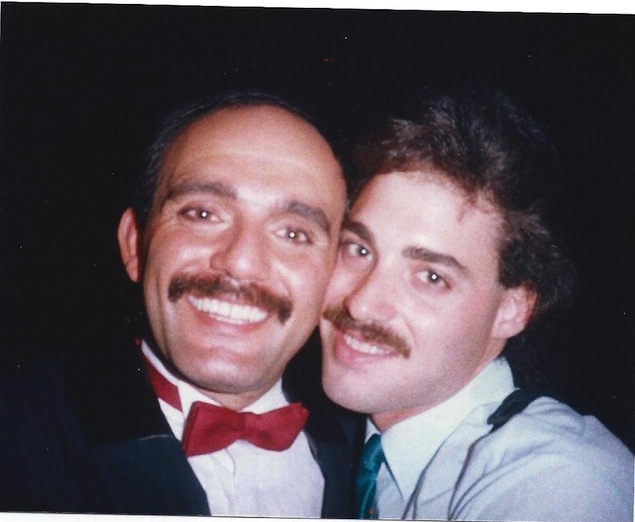
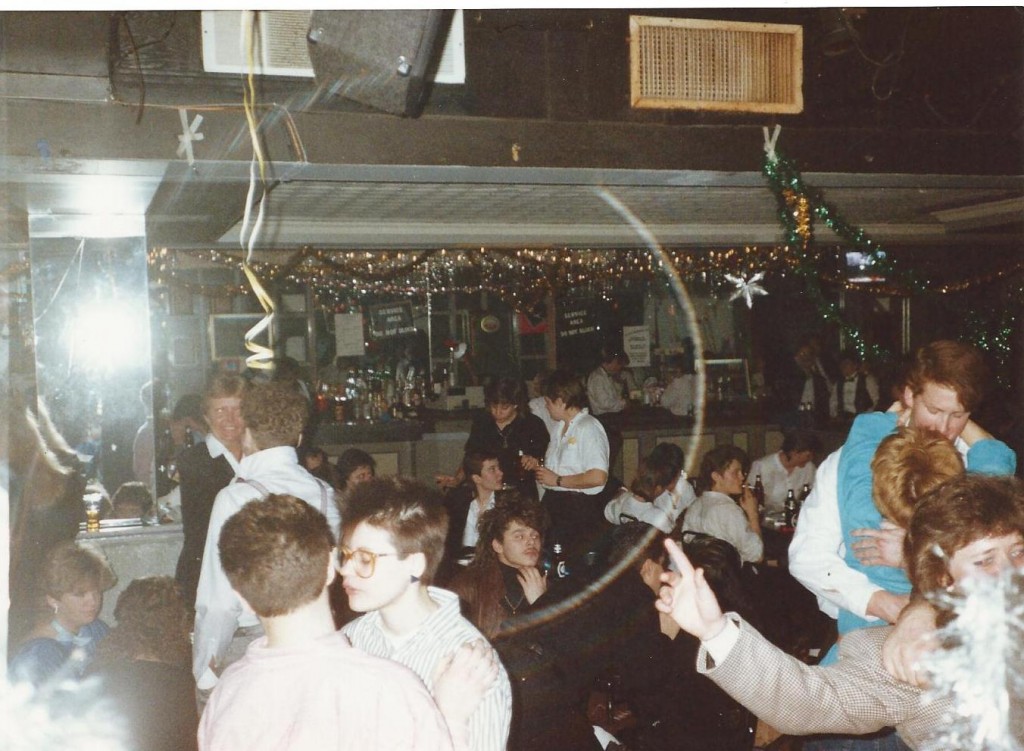
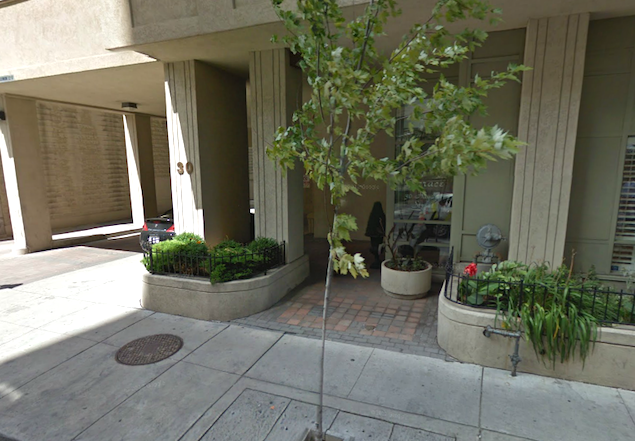
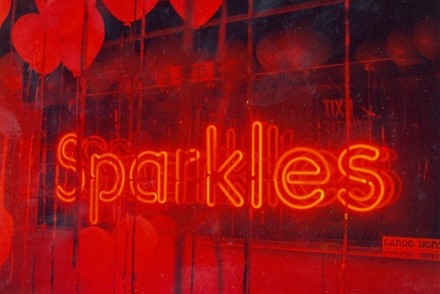
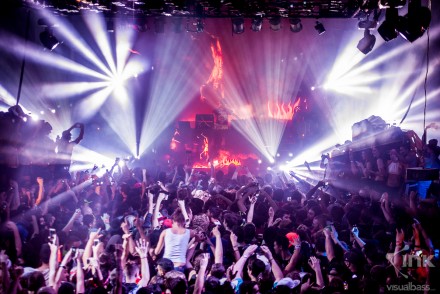
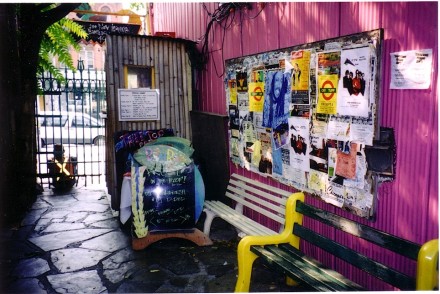

4 Comments
Came for The Rose mention stayed for the history – Denise do you think you’ll ever do one on The Rose Cafe? So many memories from there
I was the doorman on the night of the notorious DJ bust. The place was packed and there was a lineup. Anyone who wanted to step out had to show a hand stamp to get back in. A rough-looking guy pushed to the head of the line. I told him he couldn’t come in without a hand stamp. He showed me a badge instead. “You called my hand stamp and raised me one badge”, I said. He and 6 or 8 other cops filed in. My recollection is a little different from Elaine’s. What I remember was that one of them was walking through the crowded dance floor waving his badge. Deftly, someone plucked it from his fingers and it was never seen again. Next to losing their gun, the worst thing a cop could lose was his badge. People started getting arrested and when Elaine went by in handcuffs, I figured we were closing for the evening. Apparently, in court, one of the cops giving evidence said that ‘the doorman was the only one working there that wasn’t stoned or drunk’. He was incorrect…
My poppa is Mr. R. Korenowsky Sr. My Nanny is Ms. Lynn Korenowsky and Uncle is Russell Korenowsky Jr. They’d be very proud to read these articles and see their regulars and staff sharing stories so THANK YOU
All comments in the string below have been republished from their original appearance on The Grid website. We’re including the readers’ comments as they add to these Then & Now stories. We look forward to reading new comments here as well.
Linda Wayne
Great article. I worked at the Chez for quite a while, and later Felines and The Rose. I had to defend the Chez frequently because of its working class roots but I personally loved the open acceptance practiced at the place. My own club experience went back to the after hours club Davids which wasnt far from the Chez and equally accepting of men, women and those who dont fit comfortably into either label. It was this last group that was of most concern to me since we were being punted from other bars where gender crossing was seen as “too gay!” The Chez had not gone through the butch/femme era of the Cameo and Bluejay, but it also did not stigmatize folks who identified across the sex/gender spectrum. At the time I was doing an undergrad at UofT in Women’s Studies and Semiotics and had come to the conclusion that people needed to embody the identity that was most true for them. The Chez opened a space for that to happen and I am happy that I was a part of this brief history. Thanks again for a great article and for your whole series. 3:40 pm on October 16, 2013
Jane
Thank you so much for this invaluable record of an important part of our history. I am currently researching lesbian and gay history in 70′s-90′s for a book and this is so helpful. Thanks also for all your excellent gigs over the years. 2:16 pm on August 13, 2013
Ben Genereaux
Thank you so much for the great memories. I used to go to the Chez from 87 – 89, with my friends Josie, Victor, John, Rushmee and Ronald. Being new to the gay scene and a small town boy the Chez was the perfect place for me to grow my wings and discover who I was. Whenever I hear songs from Eria Fachen, New Order or Company B I’m always taken back to those days…and I had a huge crush on Sergio. Thanks again, you’ve made my day. Ben Genereaux 2:45 pm on July 1, 2013
Johnny B Goode
The Chez was a student and postie hangout long before it became a lesbian lounge in the 80′s. It was a gathering spot for students from U of T and Ryerson in the early 70′s up to its conversion to a gay bar. There was a piano player, Peter Hall, who originally hailed from New Zealand, who played through most of the 70′s and always ended the night with his rendition of Peter Sarstedt’s “Where Do You Go to, My Lovely?” The amazing or terrifying thing is that Hall also was an elementary school teacher by day. Rusty K. only came out after his father died. He had a heart of gold, but was a pretty tortured soul. He died of HIV in January of 1993 and was buried from Kane’s Funeral Home in North York. 9:51 pm on February 22, 2013
ruby hamilton
This story is great! I’m reading the other side. During the ’80′s I had the Toronto PFLAG phone line 24/7 and often got phone calls asking, “where are the clubs for lesbians?” My son is gay so of course I was at a loss….didn’t know of any until Pope Joan. Usually I would tell the caller to go to the coffee place at Church and Wellesley and ask the people there. And here it was all the time! ! LOL 1:42 pm on January 15, 2013
Elinor Mahoney
Loved the article! Although I wasn’t a regular, it was very much a feature of my life in the 80s. Great to hear the memories and see the photos. I got energized just reading this! Thanks, Denise. 9:47 pm on January 14, 2013
Deb Purdon
What a wonderful and tasteful article. During the days of the Chez I was away from the scene but know alot of the women who either worked or frequented the bar. I would frequently get updated about what and who was going on. I did go down to the bar a few times when it was open and it was always hopping, and was so different from the bars I had been used to (Blue Jay, Cameo, Togethers and The Studio.). The Chez Mio was so BIG, but it was always a good time when I did go. Great memories have been shared in this article and is definately a good read! Thanks to all involved for sharing a big part of our history and the pictures included are fabulous! 9:00 pm on January 14, 2013
Quinn
Great article! Well written  6:57 pm on January 14, 2013
avas
i am glad good clubs have a dress code now. what used to pass for club wear back then was a bad joke 1:17 pm on January 14, 2013
Matt
And if by good dress code you mean girls with skirts short enough to bare-all their pieces and douche-bags in ill-fitting blazers with Armani Exchange T-shirts and True Religion Jeans all wrapped up in spray tans, then gee golly I think you’re right! 2:57 pm on January 14, 2013